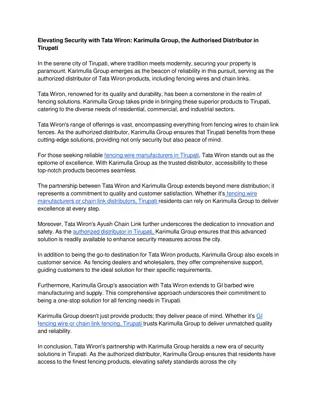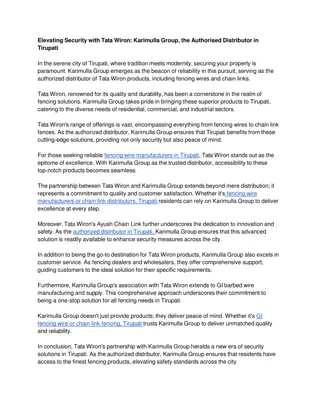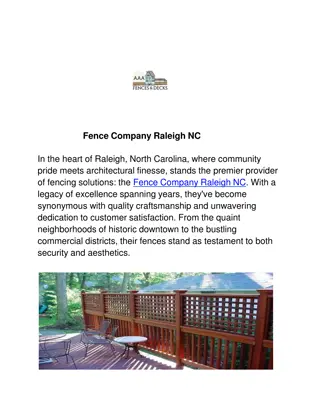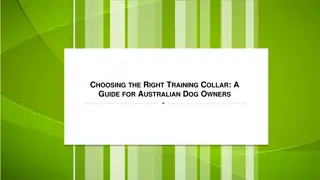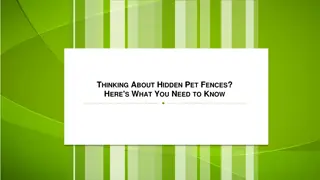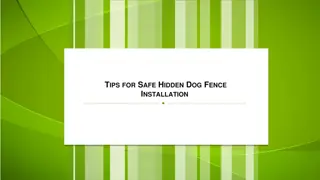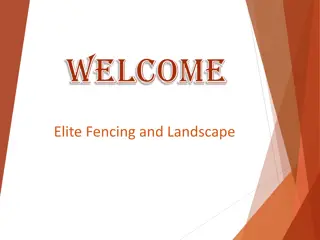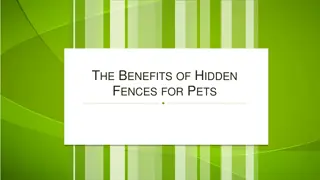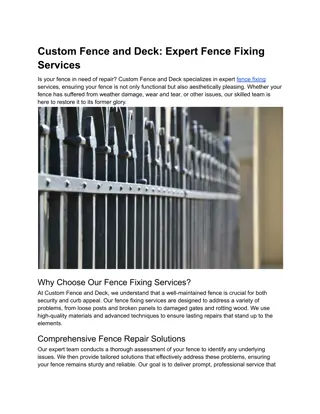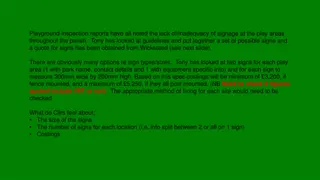
Fencing Cultures: Land Ownership and Boundaries
Explore the concepts of fencing in or out in different cultures, discussing the responsibilities of property owners and the implications on land ownership and public use. Join a small group discussion to analyze the cultural perspectives and factors influencing community relationships to land.
Download Presentation

Please find below an Image/Link to download the presentation.
The content on the website is provided AS IS for your information and personal use only. It may not be sold, licensed, or shared on other websites without obtaining consent from the author. If you encounter any issues during the download, it is possible that the publisher has removed the file from their server.
You are allowed to download the files provided on this website for personal or commercial use, subject to the condition that they are used lawfully. All files are the property of their respective owners.
The content on the website is provided AS IS for your information and personal use only. It may not be sold, licensed, or shared on other websites without obtaining consent from the author.
E N D
Presentation Transcript
FENCE IN OR FENCE OUT Activity created by Dr. Kris Acheson-Clair, CILMAR
FENCE IN OR FENCE OUT SPECTRUM Fence In Fence Out It is the property owner s responsibility to fence in their land and anything on it, such as livestock or pets. If an individual doesn t want others (including people and animals) on their land, they must fence them out. Land is generally perceived of as claimed by individuals or entities. Land is generally perceived as for public use (unless otherwise marked).
FENCE IN CULTURES Fence In: It is the owners responsibility to secure their pets or livestock and keep them on their property. The owner is liable if their pet or livestock escape and cause damage to others property. Land is considered more private. Trespassing is automatic (you are behaving inappropriately or unlawfully unless you are on your own property, or have permission to be there).
FENCE OUT CULTURES Fence Out: If an individual does not want others livestock or pets on their property, they must build a fence to keep them out. If there is not a sufficient barrier (in good repair), the owner of the livestock or pet is not liable for any damage that occurs to or on others property. Land is considered more public or communal. You aren t trespassing unless you cross a clearly marked boundary (such as No Trespassing signs).
FENCE IN OR FENCE OUT SPECTRUM Fence In Fence Out It is the property owner s responsibility to fence in their land and anything on it, such as livestock or pets. If an individual doesn t want others (including people and animals) on their land, they must fence them out. Land is generally perceived of as claimed by individuals or entities. Land is generally perceived as for public use (unless otherwise marked). Where does your culture fall on the spectrum?
SMALL GROUP DISCUSSION Share your communities locations on the spectrum with your group and illustrate your reasons for that placement with specific, concrete examples of laws, norms for behavior, or a story from your past experience. Note commonalities and variation within your group. How similar or different are your cultural groups and communities? Think analytically about causes: Discuss the historical, geographical, religious, and any other factors that you think may have played a role in your communities relationships to land.
DEBRIEF How do newcomers to your communities learn about these expectations for land use? Is there always an assumption of assimilation (adapt or else)? How strictly are the norms followed? What are the consequences when expectations are violated? Does motive matter? How are conflicts over land use resolved in your communities? Optional question: What happens when two different communities claim the same space for different purposes (most often border disputes, but sometimes over holy ground) and want to apply different rules for land use or access? How do these disputes generally get solved? Are there other potential solutions?


